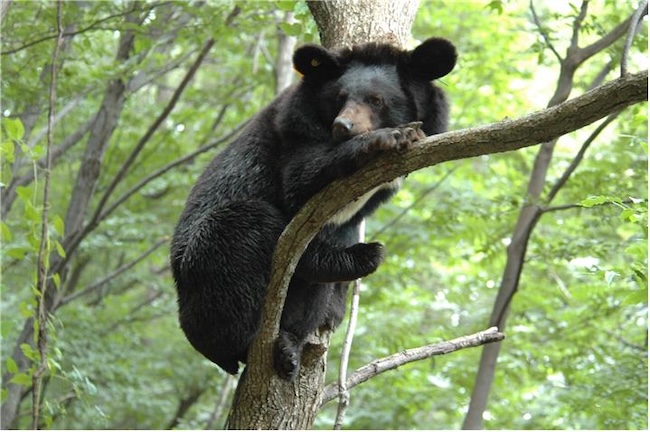SEOUL, Oct. 2 (Korea Bizwire) – The Asiatic black bear, a symbol of South Korea’s efforts to protect endangered species, has been named October’s Endangered Wildlife of the Month by the Ministry of Environment, highlighting a noteworthy conservation success story.
Just over two decades ago, these bears, known for the distinctive white crescent on their chests, were on the brink of extinction in South Korea. By the early 2000s, their population had dwindled to a mere five individuals in the Jirisan mountain range, victims of habitat destruction and rampant poaching.
Recognizing the dire situation, the South Korean government launched an ambitious restoration project in 2004. The initiative began with the introduction of six Asiatic black bears from Russia, released into Jirisan National Park.
The program’s success became evident six years later when the first cub was born in the wild. Today, the Ministry of Environment estimates that about 80 bears roam the Jirisan area, with 73 of them born in their natural habitat.
“This is a testament to what can be achieved with dedicated conservation efforts,” said a spokesperson for the National Park Service. “We’ve brought these bears back from the edge of extinction in our country.”
The Asiatic black bear, also known as the moon bear, is characterized by its round ears, short muzzle, and glossy black fur. Adults typically measure 138 to 192 centimeters in length and weigh between 80 and 200 kilograms. The crescent-shaped white patch on their chest, which gives them their nickname, varies in size and is absent in some individuals.
These omnivorous animals feed on a diverse diet including tree fruits, acorns, honey, insects, and bird eggs. They hibernate during the winter months when food is scarce.
However, the bears’ increasing numbers have led to new challenges. Recent sightings on hiking trails have raised concerns about human-wildlife conflict. The National Park Service advises hikers to quietly move away if they spot a bear at a distance, and to back away slowly without breaking eye contact if the encounter is close.
Designated as an endangered species in 1998 and classified as Grade I (the highest level of protection) since 2005, the Asiatic black bear is strictly protected under South Korean law. Unauthorized capture, collection, or killing of these bears can result in up to five years in prison or fines ranging from 5 million to 50 million won.
Lina Jang (linajang@koreabizwire.com)







